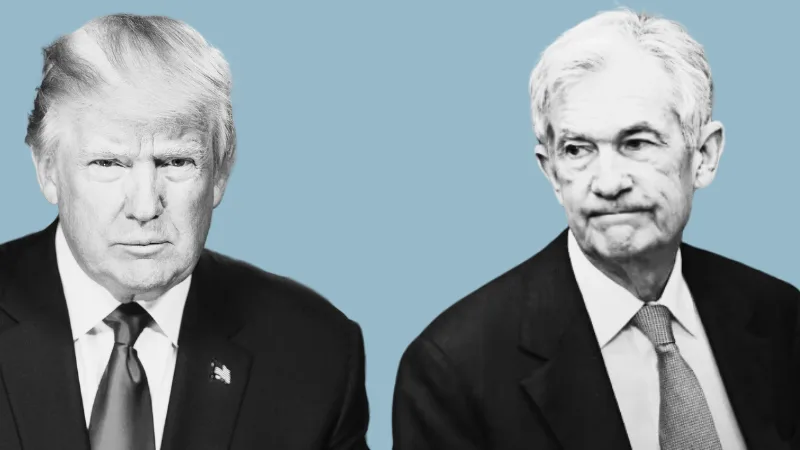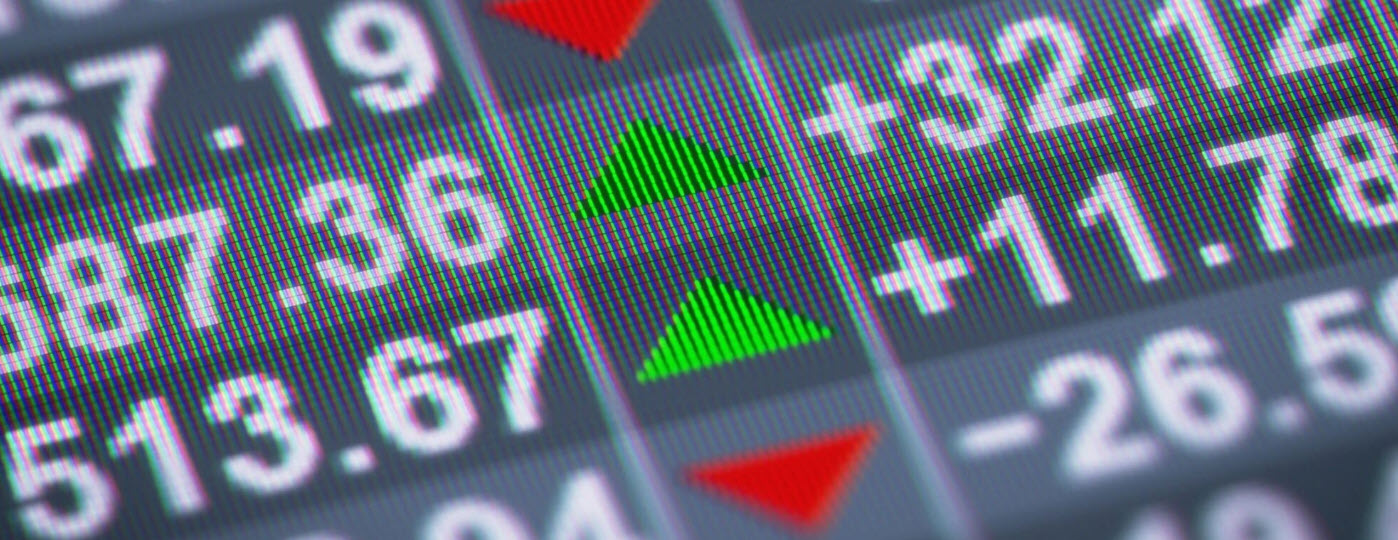President Donald Trump’s renewed attack on Federal Reserve Chairman Jerome Powell has triggered a wave of volatility across financial markets. Stocks tumbled, the dollar sank to multi-year lows, and long-term U.S. Treasury yields spiked — signaling that investors are taking Trump’s threats seriously.
While Powell’s official term runs until May 2026, Trump’s comments are raising serious concerns about the independence of the Federal Reserve and whether Powell might be fired early. Market strategists are already sketching out what such a scenario could mean — and it’s not pretty.
The Market’s Violent Reaction
On the first trading day after the Good Friday holiday, U.S. financial markets responded with a rare trifecta of risk-off behavior. All three major stock indices fell sharply: the Dow Jones Industrial Average dropped 2.48%, the S&P 500 fell 2.36%, and the tech-heavy Nasdaq sank 2.55%.
But the equity selloff was only part of the story.
The 30-year Treasury bond yield surged to 4.91%, its highest level in three months. This spike reflects investors dumping long-dated U.S. government debt, signaling waning confidence in economic stability and central bank management. Meanwhile, the U.S. dollar, typically a safe-haven asset, dropped 1% against a basket of major currencies — falling to a three-year low as measured by the ICE U.S. Dollar Index (DXY).
That kind of across-the-board selling — stocks, bonds, and the dollar all moving lower simultaneously — is a red flag.
What’s Behind the Chaos?
The catalyst for the sudden market turmoil was a series of aggressive posts by President Trump. On his Truth Social account, he wrote that Powell’s “termination cannot come fast enough!” and told reporters, “If I want him out, he’ll be out of there real fast, believe me.”
This comes after Powell issued a sobering warning about the economic risks of rising inflation and potential labor market weakness. Powell stated that the Fed could wait for additional clarity before deciding on interest rate changes — a stance Trump sees as overly cautious in the face of economic slowdown risks, particularly those tied to Trump’s own tariff policies.
According to reporting by the Wall Street Journal, Trump has even discussed replacing Powell with former Fed Governor Kevin Warsh, though such a move would likely face significant legal and political hurdles.
Can a President Fire the Fed Chair?
It’s not clear-cut. The Federal Reserve Act only permits removal of a Fed governor “for cause,” and even then, a court battle would be inevitable. However, some experts believe the damage may already be done simply by the threat.
“If you get to the courts, you’ve probably already lost the credibility in the eyes of the financial markets,” said Will Compernolle, a strategist at FHN Financial. In other words, whether or not Powell is removed, the perception that the Fed is vulnerable to political interference is enough to cause lasting reputational damage — especially among foreign investors.
And that perception can carry real consequences.
A “Fire Powell” Trade Could Be Catastrophic
Michael Brown, senior research strategist at trading platform Pepperstone, didn’t mince words. “Were Powell to be fired, the initial reaction would be a huge injection of volatility into financial markets, and the most dramatic rush to the exit from U.S. assets that it is possible to imagine,” he wrote in a client note.
Brown predicted collapsing equities, aggressive selling of U.S. Treasuries, and a nosedive in the dollar’s value. “If this were to happen,” he added, “then the reserve status of the dollar, and haven value of Treasuries, would be wiped out — probably forever in both cases.”
This is more than just a political drama — it’s a systemic threat to the architecture of global finance.
Gold and Foreign Markets Surge as U.S. Assets Get Dumped
As markets digested Trump’s latest attacks, safe havens like gold and foreign sovereign debt began to outperform. Spot gold prices rose 0.34%, and capital began shifting toward non-dollar-denominated assets. According to strategists at Evercore ISI, this points to an emerging trend: risk premia on U.S. assets are rising, meaning investors are demanding greater returns (or fleeing altogether) to compensate for higher perceived risk.
“We’re seeing an extremely rare combination of falling U.S. stocks, bonds, and the dollar,” said Evercore’s Krishna Guha. “This suggests investors are reallocating not just within U.S. markets — but out of them.”
Could This Shift Trigger a Stagflation Scenario?
Evercore analysts warn that if Trump continues threatening Fed independence, or worse, fires Powell, we could shift from a “recession trade” to a “stagflation trade.” That means slower economic growth combined with rising inflation — a dangerous mix for policy and portfolios alike.
Stagflation often leads to aggressive tightening cycles in the future, higher unemployment, and deteriorating investor confidence. In such a scenario, growth stocks and bonds suffer, while hard assets like gold and commodities typically shine.
What Investors Should Be Watching Now
While Trump’s comments may be politically motivated, the market reaction is very real — and potentially long-lasting. Here’s what investors should monitor and consider:
1. Federal Reserve Independence
Investors should pay close attention to any signs the White House is moving beyond rhetoric and toward action against Powell. A credible threat to remove the Fed Chair could destabilize markets more dramatically than any single policy announcement.
2. Interest Rate Outlook
If Trump pressures the Fed into prematurely cutting rates, that could temporarily lift risk assets but also undermine inflation-fighting credibility. Expect short-term gains followed by long-term instability — especially in the bond market.
3. Flight to Safety
Gold, commodities, and certain foreign currencies may become more attractive as hedges against U.S. asset volatility. U.S.-dollar-denominated bonds, especially long-duration Treasuries, are likely to suffer if confidence in U.S. governance wanes.
4. Currency Markets
The dollar’s role as the global reserve currency depends on the perception of U.S. stability. Any further weakening in that perception — via Fed politicization — could accelerate de-dollarization trends, particularly among BRICS nations and major oil exporters.
5. Sector Impacts
- Financials may suffer as rate expectations shift unpredictably.
- Technology and growth stocks often depend on rate clarity — any uncertainty hits them hard.
- Energy and commodities may benefit from dollar weakness and inflation hedging.
Final Thoughts: The Trump Factor
President Trump’s blunt rhetoric and policy interventions have long been a wildcard for markets. But directly challenging the autonomy of the Federal Reserve is playing with fire. Even if Powell remains in office, Trump’s repeated statements are testing the guardrails of central bank independence — a bedrock principle of modern financial systems.
For investors, the message is clear: don’t just watch the Fed — watch the White House’s posture toward it.
If this trend continues, diversification outside of U.S. assets, increased gold exposure, and a keen eye on political risk will be more than just smart strategy — they may be essential for preserving capital.





